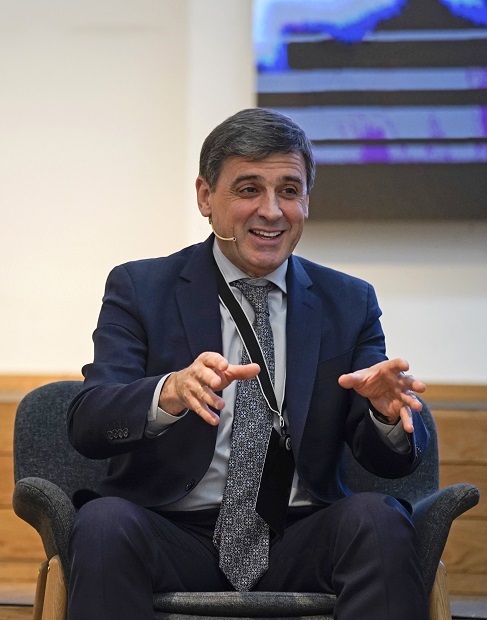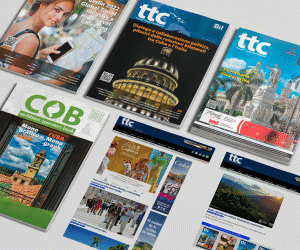“A smart tourist destination (STD) is defined around five central aspects that are governance, innovation, technology, accessibility and sustainability. In each one of them, a series of indicators are evaluated that are aimed at improving the management of the destination, as well as improving the tourist experience,” Enrique Martínez Marín, president of SEGITTUR, Spain’s State Company for the Management of Innovation and Tourism Technologies, responsible for promoting innovation in the national tourism sector, both in the public and private sectors, explained in an interview with TTC.
The expert talked about the advantages of a smart destination and the factors involved in achieving that goal. “The governance system must contribute so that tourists have a better experience during their stay in the destination, where, thanks to accessibility, everyone can have an enjoyable sojourn. The vocation for innovation also contributes to marketing, both in terms of attracting and retaining visitors. In short, the central aspects of the smart destination contribute to a better service and, therefore, the satisfaction of tourists as well.”
Given its excellent results, the STD project promoted by the Ministry of Tourism and SEGITTUR has set standards at an international level. Martínez Marín explained that “the methodology applied in the smart tourist destinations project had an international vocation from the beginning. Spain analyzed different needs of tourist destinations and grounded them in a model, which has been recognized by international organizations such as the World Tourism Organization (UNWTO), the World Travel and Tourism Council (WTTC), the European Commission, the Organization for Economic Cooperation and Development (OECD), and the Inter-American Development Bank (IDB).
“The model has been implemented in some international destinations such as Medellín, Colombia, and Tequila, Mexico, while it has been welcomed by the IDB to give it an Iberian-American form and extend it throughout the Latin American and Caribbean region, adapted to their peculiarities.
“International interest in implementing the STD model is increasing. We have just finished working with Bogotá, one of the most important cities in Latin America, for which a diagnostic report and an action plan have been made for its conversion into STD.”
The president of SEGITTUR referred to accessibility as “the most difficult central aspect for destinations to comply with, since we all start from a base established according to previous values that forgot the needs of very significant parts of the population. Accessibility marks a horizon of demand that, as it has many obligations behind it, takes longer to bear fruit. However, there is a faster part in its extension, and it is related to the digital environment such as the promotional websites or mobile applications. The important thing in this aspect is that for the future we are setting a very clear path of how things should be done.”
“Sustainability is one of the basic aspects of the model,” he added. “We generally talk more about environmental sustainability, since we must prevent tourism from having a negative impact on the natural environment; but in the STD model economic sustainability is also measured and worked on, with the aim of knowing what impact tourism has on the local economy, what employment it generates, etc. To all this, we must add social and cultural sustainability, it is important that destinations maintain their essence and respect the culture and idiosyncrasy of each place.”
Hence, alliances at both the government and business levels are essential: “Public-private collaboration is a fundamental aspect for the model of smart tourist destinations to work. In fact, the Smart Tourist Destinations Network has three types of members, among which the public presence is combined: destinations and institutions; and the private, as is the case of companies. Tourists consume services from private companies such as hotels and restaurants, but also public services such as buses, roads, etc. That is why, without harmonization and public-private collaboration, it is not possible for the tourist action to take place.”
Regarding the role of the digitization of destinations, especially in the context generated by the pandemic, he pointed out that the situation created by COVID-19 has boosted this process, since new needs have arisen detected from the public and private sectors to which technology has responded, thus contributing to the modernization of destinations.
“With the pandemic, the importance of public services and digitization has become evident, its presence in some processes in the tourism sector contributes to a more satisfactory tourist experience, since while times are streamlined, the management and safety improve.”
To conclude, Enrique Martínez Marín referred to the next steps and main challenges of the STD Network, which has positioned Spain at the forefront of smart tourism.
“We are working day by day on the evolution of the model, since it has to be adapted to new circumstances and needs…. Moreover, we aim to measure its impact on the destinations that already use it. The design of new services for the members of the Network and the constitution of working groups for specific topics related to the member destinations are added. In relation to the challenges in the medium and long term, the international expansion of the model should be highlighted.”

MORE NEWS












